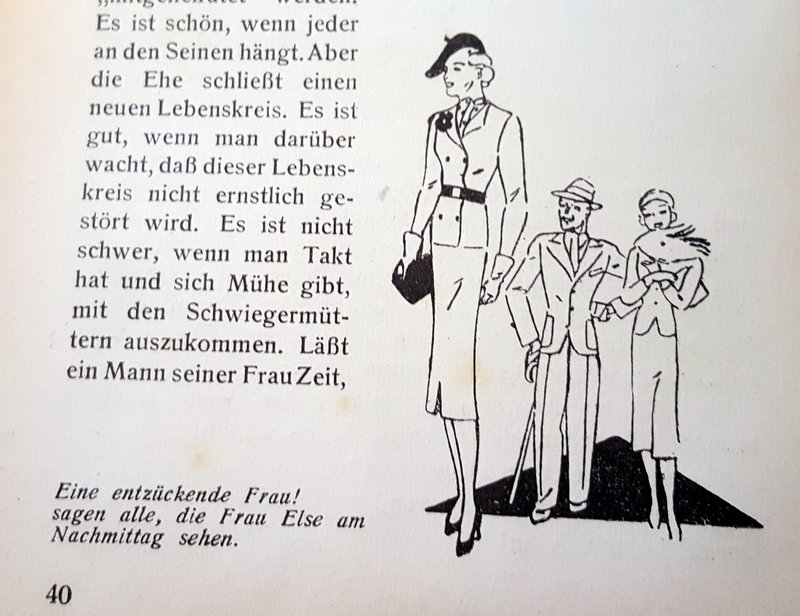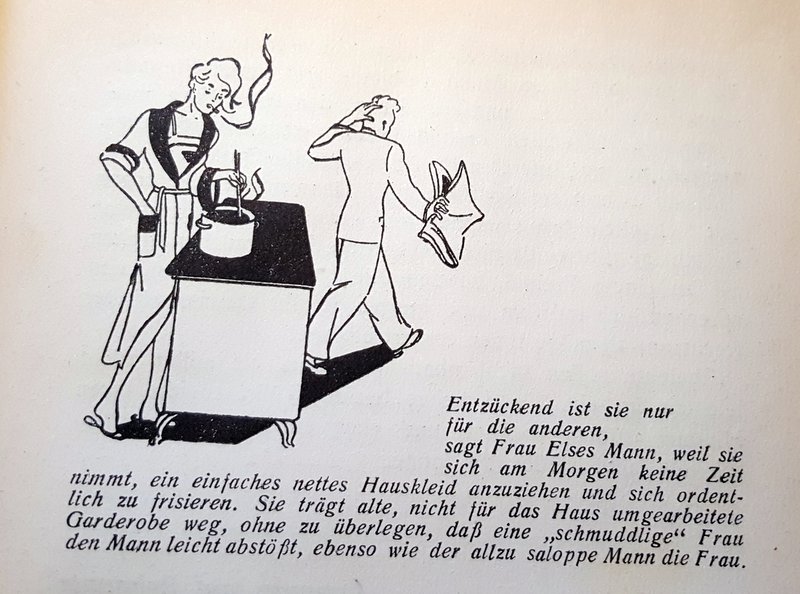Knigge
In Germany, the book the “Knigge” describes the etiquette that the upper-class ought to follow. The first version was published by the nobleman Adolph Freiherr Knigge in 1788 as “Über den Umgang mit den Menschen” (roughly “How to interact with people”). Many updated Knigges have since been published and they reflect the values of their times. I read the version by Kurt von Weißenfeld “Der moderne Knigge” from 1950:
- I liked the part on children: Children who’re kept busy with good activities are well-behaved children. Sensible ways to engage children must be taylored to their abilities and interests (“Interessenwelt”). (p19)
- Don’t take your issues out on your children. (p20)
- On relationships, a sentence that might have come from Esther Perel: Where there is closeness, there is soon tightness. (p29)
- A surprising amount of text is devoted to how a wife should treat a husband who comes home in a bad mood. Apparently, wife who doesn’t remain silent when the husband is in a bad mood is a “dumb goose” (p30). The supposedly correct response is for the wife to go to another room and leave cigarettes and cognac with him (p31).
- One of a wife’s duties is to install “half a dozen” ash trays in every room and empty them twice a day. She should also fake enjoying her husbands hobbies, such as playing cards.
-
And then there’s this:
 “Everybody considers Mrs Else enchanting”
“Everybody considers Mrs Else enchanting” “But enchanting she is only for others. At home she doesn’t even bother to put on a dress or make her hair. Such a “grabby” woman easily repels her husband, just as a too dashing man repels a woman.
“But enchanting she is only for others. At home she doesn’t even bother to put on a dress or make her hair. Such a “grabby” woman easily repels her husband, just as a too dashing man repels a woman. - To top it all off, Weißenfeld delves into the 1788 Knigge’s treatment of women and how society has progressed and is now “egalitarian”.